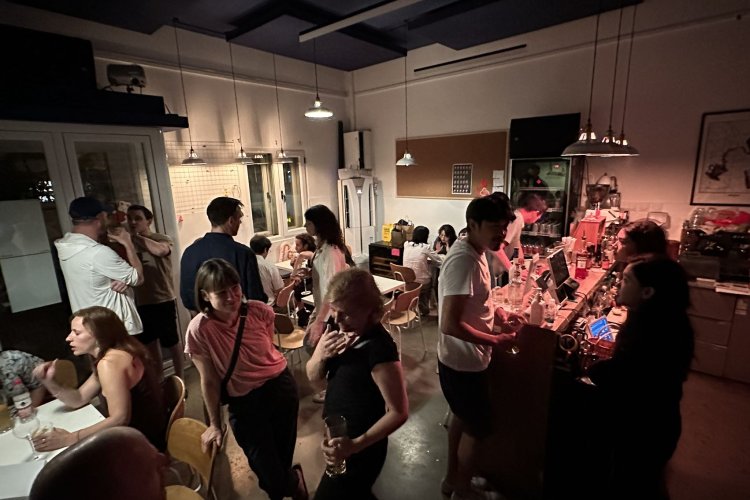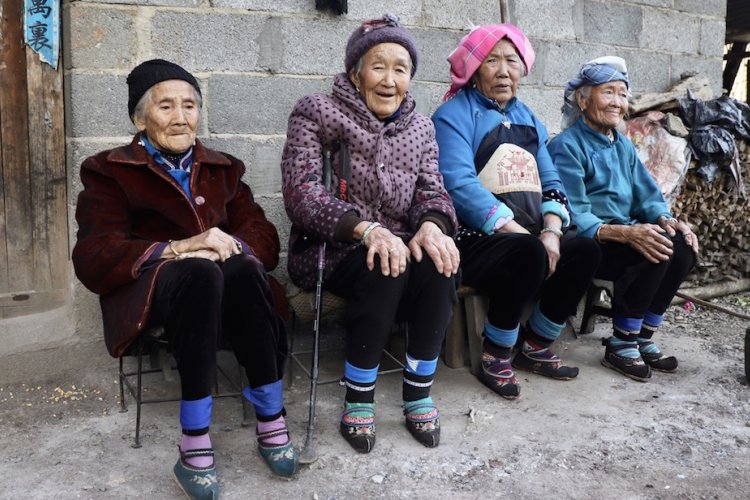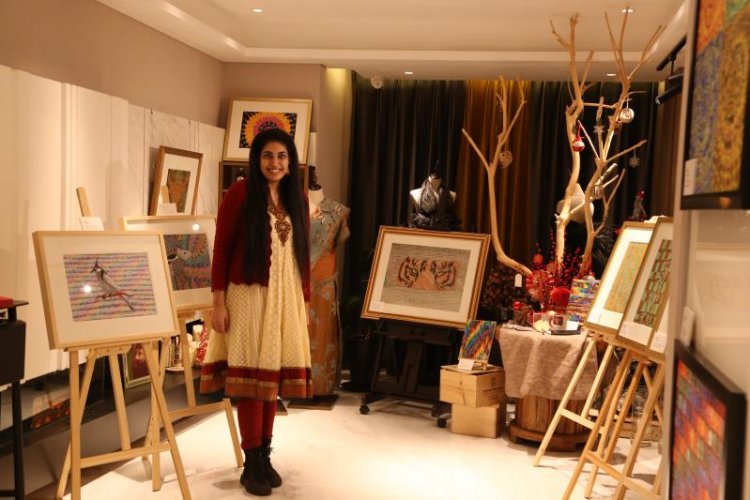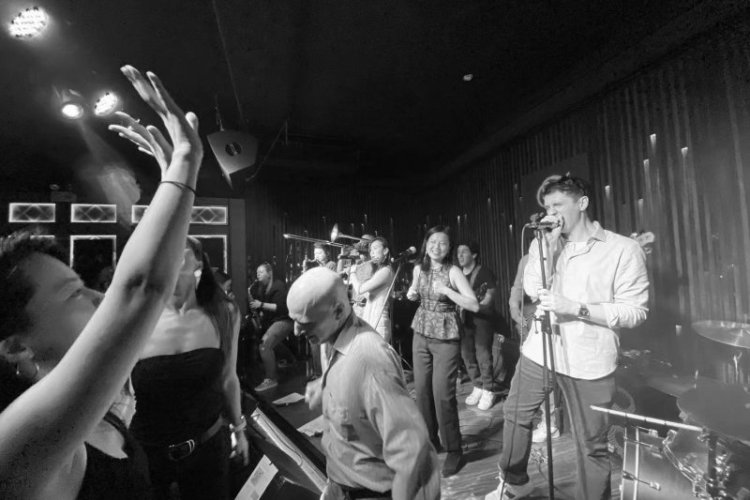Women Without Men: Interview with Shirin Neshat
U.S. based Iranian artist Shirin Neshat has created a rich video series delving into the complex lives of women in her homeland, currently showing at Faurschou Beijing gallery (until Mar 1). Mixing magic, tragedy, history and politics, the videos explore five female characters from Shahrnush Parsipur’s magic-realist novel Women Without Men. As well as evoking some extraordinary tales of women, Neshat’s videos trace the contours of a crucial turning point in Iran’s recent past – the U.S. and British-backed overthrow of the country’s democratically elected government in 1953. Dan Edwards profiled the author for the January issue of the Beijinger magazine - keep reading below for his full interview with the artist.
Dan Edwards: Each of the five videos comprising Women Without Men is quite different in style, from the elliptical imagery of “Mahdokht” to the more realist approach of “Farokh Legha.” Was Women Without Men conceived from the outset as a five-video series, and did you have a clear idea of how you wanted to approach each character when you started the series?
Shirin Neshat: The different approaches were mainly due to the distinctions between each of the characters. For example Mahdokht is a totally unworldly, or rather surrealistic character, whereas Farokh Legha is a very realistic and worldly character.
The novel Women Without Men was written in the style of magic-realism, and the writer clearly chose to divide her characters and their aspirations into everything from extremely realistic to extremely surrealistic. For example, Mahdokht has an obsession with fertility but is terrified of human sexuality, so she dreams of being integrated into nature, so like a tree she could sprout, produce seeds and then fertilize the world. Whereas Zarin, who is a prostitute, is mainly portrayed through her psychological problem, obsessing about her body and anorexia, and feelings of shame and sin that eventually lead her to a break down. So I basically took each woman’s dilemma and tried to, in the best way I could, reveal her spiritual, psychological, social or sexual issues. And since each woman’s problems and aspirations were different, I created totally different narratives and stylistic approaches. So in the end some of my characters are less realistic than others.
DE: For those of us not familiar with Shahrnush Parsipur’s novel, can you tell us a little about it? Does the novel unfold as a series of discreet stories, or are the stories of different characters intertwined in the novel?
SN: Originally Ms. Parsipur began writing the stories as separate and unrelated chapters, but at some point she decided to connect the different chapters together and make them into one story. So each woman begins in the city of Tehran and eventually ends up in the countryside in an orchard, where they end up living together and creating a rather utopian community.
I have to admit that I took a lot of liberties in my interpretation of the novel, and made a lot of changes to the narrative and construction of the women’s characters, although in principal they are quite close.
In the feature version of my project, which will be a 90 minute film hopefully released by early 2009, I make a clear cinematic narrative, and although the story is at times quite different to the novel, for the most part, philosophically the feature film remains truthful to the message of the novel.
In the videos, which were mainly designed to be experienced in galleries or museum settings, my approach was far less narrative, and more conceptual in terms of not really trying to tell the entire story of each character, but rather give a glimpse into the nature of each woman. So by the time the viewer has visited all the rooms and seen each woman, he or she could put the story-puzzle together.
In the videos, I remain very close to the novel in portraying each woman’s primary crisis, but the way their story is told is quite different. They become highly conceptual. To give you an example, Faezeh in the book and in my video is a traditional woman whose dreams of marriage and children are shattered because of rape. Similarly Munis’ characterization remains just like in the novel, where she finds freedom through her flight, or suicide, since she is trapped by her family and forbidden to have direct experience of the social movements outside her home.
DE: What was it that drew you to Parsipur’s work?
SN: I have known Shahrnush Parsipur’s work for a long time, as she is one of the foremost important contemporary female writers in Iran, although she now lives in the U.S.A. in exile. It was in 2002, as I was dreaming of experimenting with making a long film, that I thought it might be best to think of an existing narrative, as opposed to writing an original script. Parsipur’s style fit my work perfectly as she is known for her surrealistic literature. And like myself, her work seems to navigate somewhere between reality and magic. In other words, all her work has one foot in society, history and politics, but is also profoundly timeless, philosophical and universal in expression. So ultimately her writing has both local and global values, which is rare for Iranian literature. Most importantly her stories are always told through female characters just like myself. So as someone who was not interested in making a conventional film, I chose Women Without Men to work with in early 2003.
DE: “Munis” and “Farokh” in particular seem to evoke the deposing of Doctor Mossadegh’s government in 1953 as a buried history and a lost opportunity for Iran. Was a desire to revisit the 1953 coup, and the West’s involvement in that event, part of what drew you to this project?
SN: Yes, it was. As an Iranian, I’ve been very perplexed by the perception of Iranian culture by Americans ever since the Islamic revolution, and I found I wanted to return to this historical moment and touch on how the American government had direct relation to the overthrow of a democratic government, which eventually led to the deep resentment of Iranians against Americans, and indeed paved the road for the Islamic revolution. I had no interest in making a documentary film or an approach that would be a history lesson, but rather I found it interesting and a challenge to build events as a background to my story. In the feature, this historical aspect of the period is far more highlighted than in the videos.
DE: Mossadegh’s government is mainly known for having attempted to nationalize Iran's oil industry. Did his government also represent the possibility of improving women’s lives in Iran?
SN: As far as I understand, Dr. Mossadegh was a modern man with very progressive views regarding women. He was educated in the West, he was an intellectual and religion played little role in his ideology. If you look back to his time of government, you see a very sophisticated society with far more equality between men and women, not only in relation to government but also the cultural life of Iran.
DE: What motivated your decision to leave parts of the videos untranslated?
SN: The translation has been quite selective. There are moments in the films that we have translated, and then there are moments that I found rather obvious and didn’t feel a literal translation was appropriate. To give you examples, Munis’ conversation with the dead revolutionary is translated, but her fight with her brother is not. When Faezeh comes to the orchard, her brief conversation with Munis is not translated but her whispers to herself are. In the “Farokh Legha” video, I believe everything is translated.
DE: Is the Women Without Men video series now complete, and can you tell me about the feature version of the project?
SN: As I mentioned earlier, Women Without Men was conceived as two-fold project: a feature film made for cinemas, and a series of five video installations exclusively designed for museums and galleries. I have now finished the videos and I’m completing the feature film.
I have been very interested in how the experience of viewing the story may change completely due to the setting – a theatre versus a gallery or museum space. So in my construction and editing of the videos and the film, I’ve tried to address this issue. So once I finish the feature it will be up to the audience to draw parallels and distinctions between art and cinema.
Shirin Neshat’s Women Without Men will show at Faurschou Beijing, 798, until Mar 1.






